By Wayne Kett
Here in the superstores we have objects related to Norfolk that cover a huge period of time, but predominantly we house a social history collection related to Norwich. The objects we have help to tell the history of Norwich and its people, it is a history, lasting at least 1600 years. I wondered if I could condense 1600 years into a single blog? I tried and the answer is No! I will instead attempt to fit as much as possible into 2 blogs, so here is the history of Norwich part 1……
I am going to focus on 10 key events or periods that were crucial in shaping the city we know and love today. I will take the time to highlight objects from our stored collection in the superstore and across the museum service as a whole that relate to each period.
The Arrival of the Anglo-Saxons
The arrival of the Anglo-Saxons represents the very start of the history of Norwich. During the Roman period Norwich was likely to have been little more than a cross roads, situated in the Tombland area of the city, with at most a farm and a few houses. The major Roman settlement was called Venta Icenorum and was situated a few miles to the South of modern day Norwich.
Saxon incursions into East Anglia and their eventual dominance over the Romans in the early 5th century AD, led to the first settlers in what we now know of as Norwich.
It was an ideal place to build a settlement; the river afforded the settlers easy access to the sea as well as the ability to secure food from fishing. The soil was of a good quality for agriculture and there was a ready supply of good timber. It is important to remember that Norwich did not start as one settlement, in this period it was 5 or 6 villages that eventually merged into one. The name of one of these villages was Norwic which became the name of the city that developed.
If you want to find out more about the Anglo-Saxons, visit Norwich Castle Museum and check out the fabulous collections we have in the Anglo-Saxon and Viking gallery.
The Norman Conquest
The Norman Conquest of 1066 had drastic implications for the country as a whole; this can be seen in Norwich where it certainly left its mark. Any visitor to the city cannot fail to notice the Cathedral which at 315ft is the highest building in the city, nor can they fail to spot the Castle sitting atop its mound, still dominating the city skyline over 1000 years after it was built.
The building of the Cathedral was the initiative of the first Bishop of Norwich Herbert Losinga, who came to Norwich from a monastery in Normandy. It was probably built over a previous Anglo-Saxon settlement and Roman road. Work commenced in 1096, but was incomplete at the time of Losinga’s death and his successor Bishop Everard oversaw the completion of the work.
The present spire is the Cathedral’s fourth the first was destroyed in riots in 1272, the second in a storm in 1361 and the third by lightening in 1463.
The Castle would originally have been built of earth and wood, the stone building dates from the late 11th century or early 12th century and is one of the largest Norman keeps in England.
The Norman rulers who had successfully gained power through conquest were understandably anxious to retain possession of their new lands, therefore the castle was crucial for the defence of the city and the domination of its inhabitants.
But these are not the only Norman structures that survive:

Bishop Bridge is the only medieval bridge left in Norwich, the first mention of is in 1331. This photograph was taken in 1968 and is a view of the South side of the river.

Britons Arms – records of this building date as far back as 1347, it was a public house for many hundreds of years, but now operates as a tea shop. The great Norwich fire of 1507 destroyed almost every house on Elm Hill, the Britons Arms was one of the few to survive. It remains one of the few surviving timber framed medieval buildings in the city.
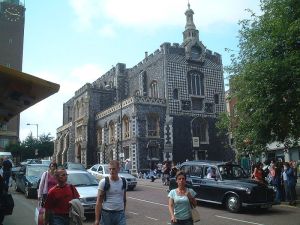
The Guildhall was built on the site of an older tollhouse, of which the undercroft survives under the Guildhall. Work begun in 1407 and once completed it was the largest building of its kind outside of London.
The Normans used massive amounts of peat for fuel, this was dug from various locations in Norfolk. The removal of this peat created large craters in the ground (the Cathedral took 320,000 tons a year!) this coupled with a rise in sea levels led to the formation of the Norfolk Broads.
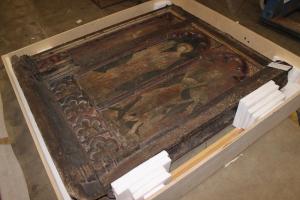
St Gregory’s Screen: One of our designated ‘Star’ objects, this is a 15th Century Church Rood Screen taken from St Gregory’s Church in Norwich (sections of which date to the 14th/15th century.)
As you can see there are many architectural features of Norman Norwich still intact, so the best thing is to get out there and have a look!!
But also be certain to check out the Norman Connections project currently being undertaken at the Castle – Norman Connections is a European project linking Norwich Castle with Norman heritage sites in England and Normandy, France.
The Construction of the City Walls
Work begun on the city walls in 1297, but it was not until 1343 that construction was complete. The walls were 3ft thick and 20ft high with battlements, in front of the walls was a bank and a ditch. The ditch was 25ft deep and 60ft wide and offered further protection. The walls acted as an important part of the cities defence, it was beyond the capabilities of the authorities to maintain law and order everywhere, but within the city walls their power could be exercised more easily.
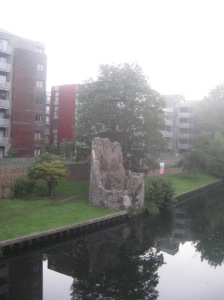
One of the towers at Carrow Bridge, where boats were restricted entry by two giant iron chains in the water; these would only be removed for friendly vessels.
Taxes, levies and tolls were due to be paid for many different reasons, and so the city walls served another important function as they restricted the movement of goods and people allowing the authorities to ensure they gathered the correct taxes and tolls.
The city walls survive in various places in Norwich:

Black Tower is the most complete section, including the tower itself and a long section of the wall which runs alongside Carrow Hill. A short distance away is Carrow bridge, where the ruins of two smaller towers are located.
Towards the end of Riverside Road and across the Wensum sits Cow Tower, this played a pivotal role in the defence of the city, (it was partly destroyed during Kett’s rebellion.) Another ruined tower and section of wall is visible further along Barrack Street, then at the end of Magdalen Street and opposite the Artichoke pub there is small section of wall remaining.
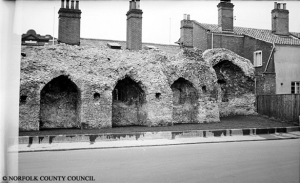
The section of the city walls in front of the Chapelfield Mall. At the time of this photograph (1957) the site behind the wall was home to the Mackintosh factory producing chocolate and confectionery.
Over 800 years after their construction the city is still defined by its walls. If you mention that something is within the city walls to a local, they will instantly know the geographic area you mean. Despite the wall only surviving in fragments and not being a continuous structure it still persists as an invisible demarcation of what is in the city centre and what is outside.
Kett’s Rebellion
The history of mankind is a history of rebellion, from the peasant’s revolt, to the French Revolution and even recent events like the springs in the Middle East have seen people who believe they are being oppressed revolt against their oppressors. Perhaps the biggest such occurrence to ever hit Norwich was Kett’s rebellion.
It started in the summer of 1549, as a minor disturbance in nearby Wymondham, but spiralled into a sequence of events that led to a national crisis for King Edward VI.
Peasants begun pulling down fencing around enclosed fields (the process of enclosure involved taking away common land and physically enclosing it for exclusive use by the landowner). One local landowner (John Flowerdew) alarmed at what was happening and fearful for his own land bribed them to attack his rival Robert Kett’s fences. This backfired drastically as Kett joined the protestors, helping them rip down his own fences before leading them to attack Flowerdew’s.
Kett then marched the growing army of men (10,000) to Norwich, where they were refused entry. So they camped on Mousehold Heath for 7 weeks.
Kett and his advisors produced a document entitled ‘29 articles of complaint, concerning economic matters’. It included one particularly revolutionary statement asking that ‘We pray that all bonded men may be made free’. Although serfdom had been largely in decline in England since the Peasants Revolt, the final serfs were not freed until 1574.
Despite being offered a pardon in exchange for dispersing Kett’s men raided the city, imprisoning the mayor and 5 other leading citizens. The government responded by sending 1,400 men and a battle was fought at Bishopgate in the full glare of the Cathedral on the 1st August. The government troops were forced out of the city and for that day at least Kett was victorious. At this point many of the cities nobles fled to London with the retreating army, leaving Kett in total control of the city.
Clearly the government could not let this situation persist, so they sent a huge force of 12,000 troops and before August was over the rebels had been forced out of the city. From Mousehold Heath Kett’s men attacked the city from the top of what is now Gas Hill, partially destroying Cow Tower. Finally a further retreat to Dussindale saw them defeated by the government troops.
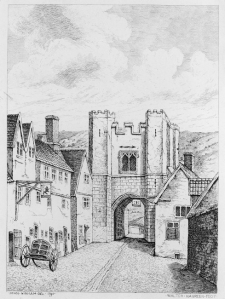
Bishopgate: Drawing by John Ninham 1791, shows Bishopgate, the hills in the distance are Mousehold Heath and show where Kett’s men would have led the attack from.
300 men were executed and Kett himself was captured in Swannington 25 miles to the north of Norwich. Both Robert Kett and his brother William were sent to face trial in London, where they were kept in the Tower of London. The trial was a formality and they were both found guilty. Robert Kett was hanged from Norwich castle with his body left hanging for months as a message to would be revolters. His brother William Kett suffered a similar fate being hanged from Wymondham Abbey and left for all to see.
For hundreds of years Robert Kett was portrayed and remembered as a traitor, but during the 19th century his reputation received a reprieve and people begun to increasingly think of him as a folk hero rather than a traitor. This is the reputation Kett retains today, a hero who stood up for the common people of Norfolk against the oppression of the ruling elites.
To find out more about Kett’s Rebellion, why not visit his home town of Wymondham? Visit Wymondham abbey where Robert’s brother William was hung (the Kett family coat of arms is displayed inside) and visit Wymondham Heritage Museum for displays relating to Kett’s rebellion.
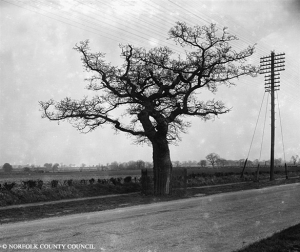
Kett’s Oak which was used as a rally point for rebels on the main road from Wymondham to Norwich. This tree still stands over 450 years later!!
The Strangers
In 1565 the areas that are modern day Holland and Belgium were a colony under the control of the Spanish. Spain was a Catholic country which conflicted with the largely Protestant local population, the result was religious persecution inflicted by the Spanish on the locals.
This meant many were keen to flee religious persecution. Coincidently at the same time the city of Norwich was facing economic difficulties and was receptive to the idea of Dutch weavers migrating, as it would strengthen Norwich’s textile industry and because new skills and techniques could be passed onto the local populace.
In 1565 the city initially allowed 30 households of refugees to migrate to Norwich. Many more followed and by 1579 there were 6,000 of them, the cities population was only 16,000 so they represented over one third of the total population.
The Strangers were allowed to live in Norwich with relatively few restrictions placed upon them, however in 1570 members of the gentry led by John Throgmorton staged a failed rebellion against the migrants failing to attract sufficient popular support. For his part in the rebellion, Throgmorton was hanged, drawn and quartered. A few years previously (1567) the then mayor, Thomas Whall had placed some restrictions on the strangers claiming that they were taking away local jobs.
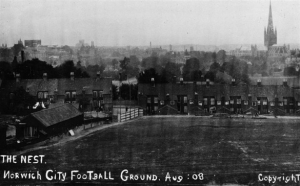
With such a large proportion of the population being migrants from overseas many cultural traditions were passed on, perhaps the most visible of these is football related. Our local team Norwich City FC compete in the Premier League itself a global phenomenon, watched in every corner of the world, Norwich though are also known by their nickname ‘the Canaries’ which is a direct influence of the Strangers who were fond of keeping canaries. (This image is from 1908, it was the previous year 1907 when Norwich City changed their nickname from ‘the Citizens’ to ‘the Canaries.
Most of the new migrants were weavers; this is where their influence is best seen. The expertise and innovations they brought over was pivotal in helping Norwich become famous for its textile industry. By the middle of the 18th century the quality of products produced were unrivalled anywhere in the world. The strength of Norwich textiles carried on until the Industrial Revolution when other cities with a greater access to cheap labour overtook Norwich, but the city diversified and continued to be a significant textile producer. It was only in the 1970s that textiles finally stopped being produced in the city.

An example of Norwich textiles from our stores – Rug used at Chamberlins department store (See Dayna’s Blog)
If you are interested in the history of Norwich’s textile industry and the influence of the Strangers then why not pay a visit to our fantastic Bridewell museum in Norwich, where there are some excellent displays charting the history of Norwich!!!
Or contact the Shirehall to arrange a visit to our accessible costume and textiles stores to see first hand some great examples of Norwich textiles.
That is easily the longest blog I have written thus far!! Norwich has such a rich and fascinating history and consequently I found it impossible to leave anything out. Please check back in a month for part 2!!
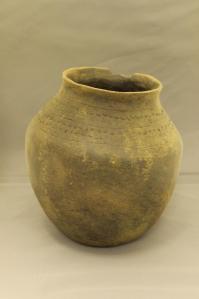
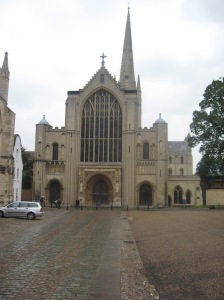


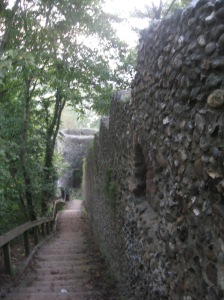
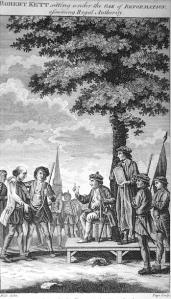

Reblogged this on Old School Garden.
LikeLike
Pingback: HISTORY OF NORWICH (PART 2) | Shine A Light Project
Left Norwich in 1964 but trying hard to remember where Stranger’s Hall is–what was it’s significance?
LikeLike
Sorry Richard we somehow missed your comment. Strangers Hall is located on St Benedict’s Street, it is currently open as a historic house / museum. The oldest part of the building dates to the 14th century and was for many years home to wealthy merchants.
This blog contains more info about the history of Strangers Hall – https://shinealightproject.wordpress.com/2013/10/23/the-bolingbroke-collection/
Thanks
LikeLike
They may have only a two-bedroom home and have the
two children to share a space. Many of Carter’s clients were left drowning in debt.
This is especially true in the field of healthcare law, upon which medical ethics are
founded.
LikeLike